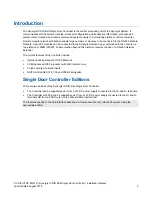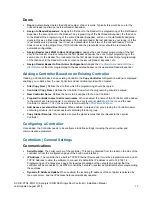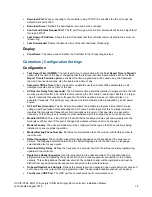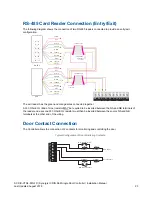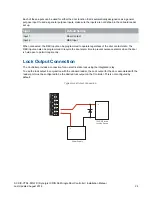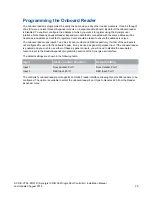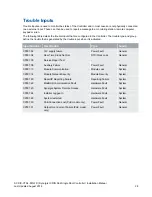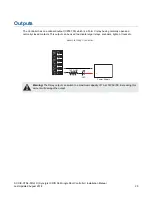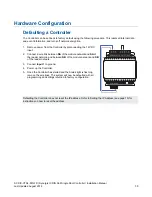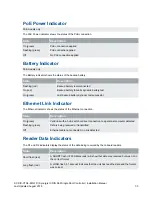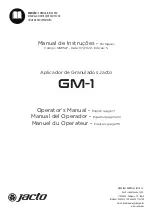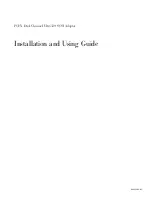
SY-SIX-CTRL-DIN-1D | Synergis IX DIN Rail Single Door Controller | Installation Manual
Last Updated August 2018
19
Encryption
Initialize Controller Encryption
: Enables encryption of the messages sent between the controller and
the Synergis server. Selecting this option performs a one-off process that randomly generates and begins
using a 256 bit AES encryption key. Using an RSA algorithm, this key is exchanged and stored in both the
controller and the Synergis database.
Disable Controller Encryption
: Instructs the software to stop using encryption. To avoid encryption
being disabled accidentally or maliciously, this option will NOT change the encryption setting in the
controller itself. To stop the controller from using encryption it must be hardware defaulted.
Encryption Enabled:
Read only field that indicates if encryption is enabled.
Controllers | Options Settings
For more information on the
Options
and
Misc Options
settings, refer to the Synergis Online Help or the
Synergis Operator Reference Manual.
Controllers | Time Update Settings
Automatically Synchronize with an Internet Time Server
: Select this option to automatically
synchronize the controller with an internet time server.
Primary SNTP Time Server:
IP address of the primary SNTP time server for the controller to update its
time from.
Secondary SNTP Time Server:
IP address of the secondary SNTP time server for the controller to
update its time from should it not be able to connect to the primary SNTP server.
Time Zone:
The current time zone that should be assigned to the controller. Offset from GMT.
When using a Time Server, the time provided is always in UTC (Coordinated Universal Time) which has
no time zone and is not subject to any daylight saving time rules. This means that you must correctly
configure the
Time Server
, the
time zone
that the controller is operating in, and the
daylight savings
settings
for NTP to work correctly. Failure to configure any of these things will result in the time being
inaccurate.
Controllers | Custom Reader Format Settings
Custom Reader Configuration
Custom Reader Type
: Defines the reader type. The data can either be output as Wiegand (D0 and D1)
or Magnetic Data (Clock and Data).
Bit Length
: The bit length defines the total number of bits that are sent by the card reader for each card
badge.
Site Code Start
: The site code start defines the index where the site code data starts in the data
transmitted. The count starts at zero.
Site Code End
: The site code end defines the index where the site code data ends in the data
transmitted. The count starts at zero.
Card Number Start
: The card number start defines the index where the facility code data starts in the
data transmitted. The count starts at zero.
Card Number End
: The card number end defines the index where the facility code data end in the data
transmitted. The count starts at zero.
Data Format
: The data format defines how the card number that is received from the card reader is
handled. If the size of the site code and card number are less than 16 bits (e.g. Site Start – Site End is
less than 16 bits) use 16 bit, otherwise use 32 bit. If unsure, use 32 bit.

